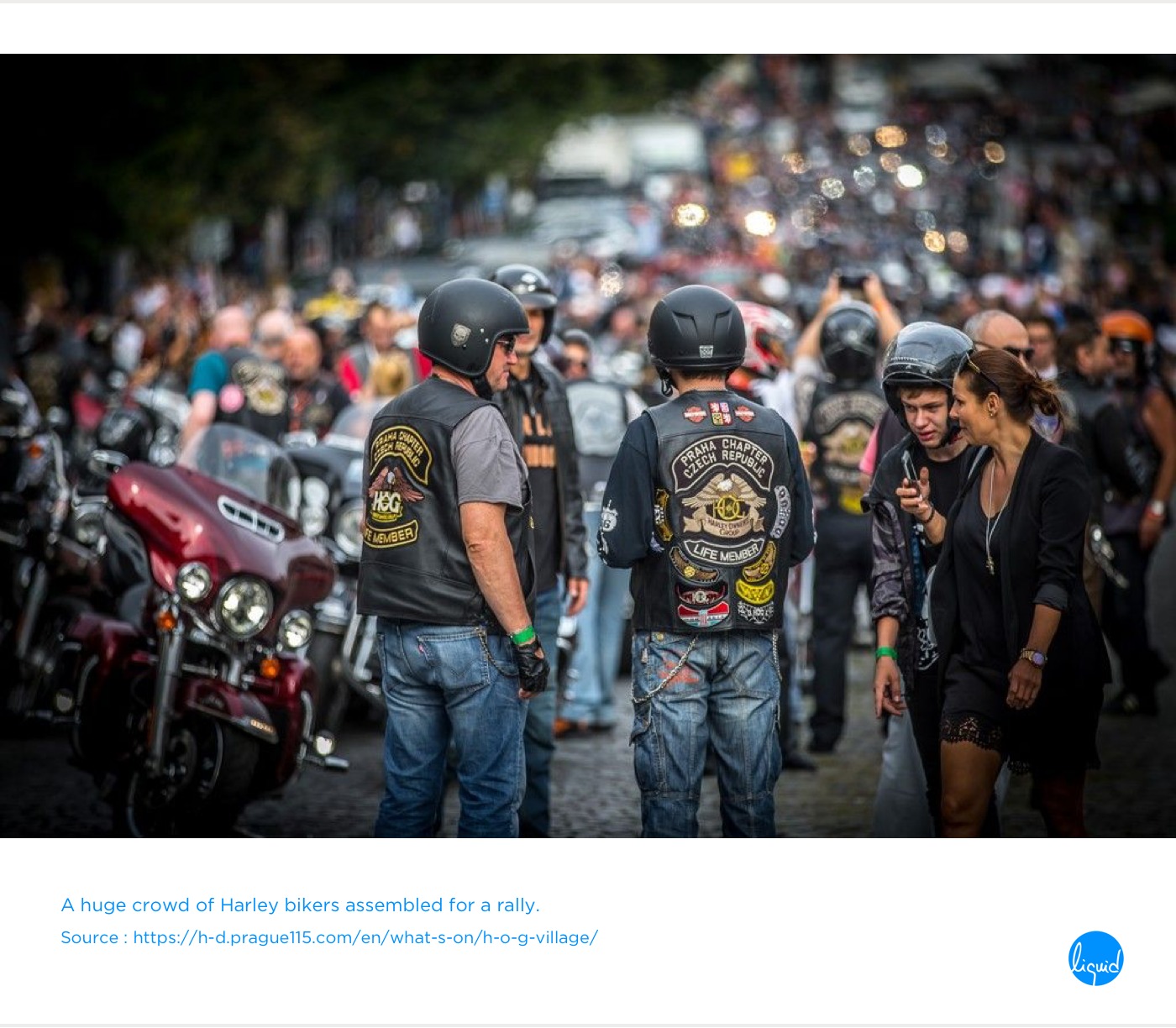It was first in 1904, that Harley Davidson started to participate in motorcycle racing and gained leadership in the market through its victories. In 1911, Harley Davidson formed their official racing team. Later, it won several races with riders like Ralph Hepburn, Eddie Brink, Joe Petreli and Red Parkhurst. The spirit of Harley bikers and the sense of exclusivity experienced by them while riding Harley has been ever since expanding.
In 1987, H.O.G. (Harley Owners Group), a community of Harley Davidson enthusiasts and bikers officially came into existence. The power and authority that H.O.G holds to drive all business initiatives at Harley, cannot be better defined than how someone on Wikipedia defines it – ‘the granddaddy of all community efforts’.

As per the Journal of Consumer Research published in March 2001 by Oxford University Press, Albert M. Muniz and Thomas C. O’Guinn defined brand community as ‘a specialised, non-geographical bound community, based on a structured set of social relationships among admirers of a brand. Like other communities, it is marked by a shared consciousness, rituals and traditions, and a sense of moral responsibility.’
As brands in the new age race to occupy the consumers’ mindshare, they are fast becoming a way of life for individuals. Harley Davidson is one such brand where its brand community (tribe) is known for celebrating the glory of Harley Davidson and its community spirit.
“Tribes are what matter now.” – Seth Godin
According to Seth Godin, tribes are a powerful force of influence and change that lead and connect people. In a TED Talk presented by him in 2009, he highlights the phenomena of assembling and spreading an idea by building a community. The success of a tribe is not achieved through money or power but through leadership.
Ultimately, a tribe thrives on a strong connection between people who share similar thoughts and ideas. It comes into existence when an individual or a brand becomes a leader and initiates to assemble greater force around it.
It is not surprising that many organisations still consider building brand communities as one of the marketing tactics. It is hard for them to believe that a brand community may have a positive impact on multiple dimensions of a business. But then, there are brands like Harley Davidson who strongly believe that community building is the lifeline of an organisation. Consequently, Harley’s community building exercise now governs its business decisions to an extent that its impact can be seen in Harley’s governance structure, operations and culture.
Read this report published in Harvard Business Review to know more about brand communities.
The members of Harley Owners Group present a strong passion for biking and owning Harley Davidson bikes. This community has proven to be an inspiration for Harley’s product innovation. It has played a vital role in improvising the performance and experience of Harley’s products based on the needs of the riders. Though H.O.G. is a small group, Harley has immense brand loyalty and drives advocacy through the group’s undissolvable community strength.
Communities emerge as a great way of strengthening relationships with its customers by organizing community interaction forums and promotional events. By conducting in such business events, brands get to connect with their influential customers and understand them better.
A healthy customer relationship allows the brand to seek customers’ opinion about the products and enhance product experiences. The ‘My Starbucks Ideas’ community is one such group of Starbucks lovers who participate in discussions and propose innovative product ideas.
Regular reach out to a brand community allows the customers to gain trust in the brand and its offerings that turn them into loyal customers. Slowly, the customers weave a better engagement with the brand and evolve into a potential force that helps the brand grow through their advocacy. Their recommendations and positive words for a brand are more trusted than anything else amongst their peer groups, professional networks and followers.
“The individual relationship with the Influencer is so important because ultimately, the influencer will associate their interactions with company employees and representatives as a reflection of the larger brand.”
– Rose Reid – Digital Strategist, Social@Ogilvy – womma.org
By creating a community, brands can easily save on costly analytics and audits conducted by market research companies on the brand’s products and services. Dedicated community members feel free to share their opinions about the product. It allows the brand to get a better peep and feel of the real problems and needs of their customers.
Sometimes, the trust developed between a brand and community is so strong, that brands allow communities to experience the products before launching it officially in the market. As a result, this creates a scope for improvisation before launching the product in the market.